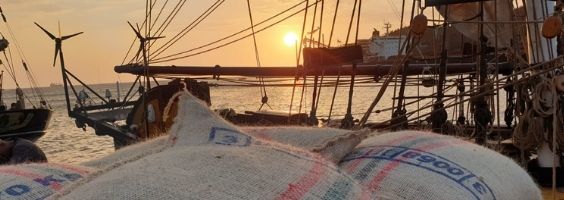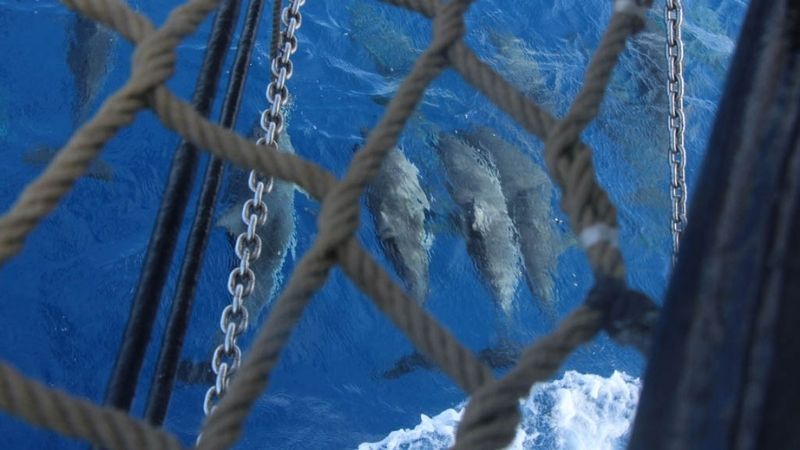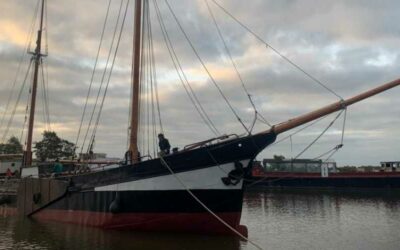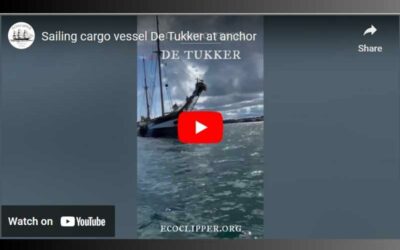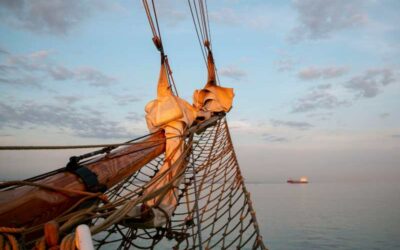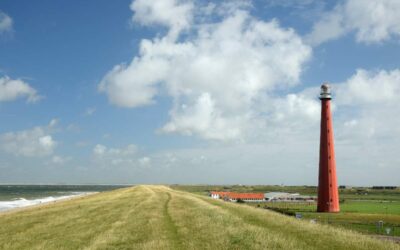By Corinna Goepfert
“As a way of measuring the contribution of the sailing industry to a sustainable future, we analyzed it in relation to the UN Sustainable Development Goals. These 17 goals were set in 2015 by the United Nations General Assembly and are to be achieved by 2030. The Goals are “the blueprint to achieve a better and more sustainable future for all”.
Sail Cargo and Travel Market Overview 2020
The Sustainable Development Goals (SDGs) are an internationally recognised set of goals created by the UN. They are a broad framework for companies, governments and communities to help work towards a sustainable future and are a useful tool to indicate the level of change that can be implemented. Sail cargo is an industry which offers a sustainable shipping solution, and meets many of the demands of the SDGs.
Goals 3, 6 and 14 look at good health, clean water and sanitation and underwater life. The conventional maritime shipping industry undeniably have a range of issues that affect life above and below water. This blog will look at the current issues, and how sail cargo in its nature reaches these goals.
Goal 3, Goal 6 & Goal 14
Good health and well-being, clean water and sanitation & life below water
Conventional shipping and travel industries continue to pollute water through emissions, toxic chemicals, sewage, and waste which is damaging coastal communities and life underwater. It is also detrimental to the health of people living in ports and coastal areas as it causes large amounts of air and water pollution.
Greenhouse gas emissions and their pollutants from industrial ships and cruisers affect the ocean and the atmosphere. Studies have shown that 70% of emissions from global shipping are released into the atmosphere within 400 km from the coast and during in port activities. Black carbon, sulphur oxides (SOx) and nitrogen oxides (NOx) are causing acid rain or air pollution impacting human health and the environment, especially in harbour areas. Therefore, they directly impact cities and communities causing air quality-related health problems.1
The shipping industry is harming life below water through noise pollution, invasive species from ballast water and fuel waste from scrubbers which also contributes to the acidification of the sea. Cruise ships also harm life underwater through waste. Sailing ships can be engineless or have smaller engines, produce less waste, and use static ballast, thereby causing significantly less damage underwater.
Additional to air and water pollution, noise and light pollution are increasing problems for residents in port areas and life below water. Overnight running engines and lights impact the sleep deprivation of citizens causing sleeping disruption and mental health problems. Life below water is also sensitive to noises. Ocean noise pollution can create hearing damages for animals impacting their communication, migration, sensing danger, finding a partner and hunting systems. All these impacts cause stress disrupting health and social structures.
By travelling without engines and using environmentally friendly electricity from land while being in ports, sailing ships respect local communities and life below water. Sailing ships emit substantially less pollution than conventional vessels and emphasize good environmental, non-polluting practices. Therefore, sail cargo not only mitigates climate change and reduces the impacts on the environment but has also health-related co-benefits. Also, sailing is good for mental well-being as those onboard are closely connected with nature while working in supportive and caring teams focusing on fair working conditions.
1 Nunes, R. A. O.; Alvim-Ferraz, M. C. M.; Martins, F. G.; Sousa, S. I. V. (2017): The activity-based methodology to assess ship emissions – A review. In: Environmental pollution (Barking, Essex : 1987) 231 (Pt 1), S. 87–103. DOI: 10.1016/j.envpol.2017.07.099.
